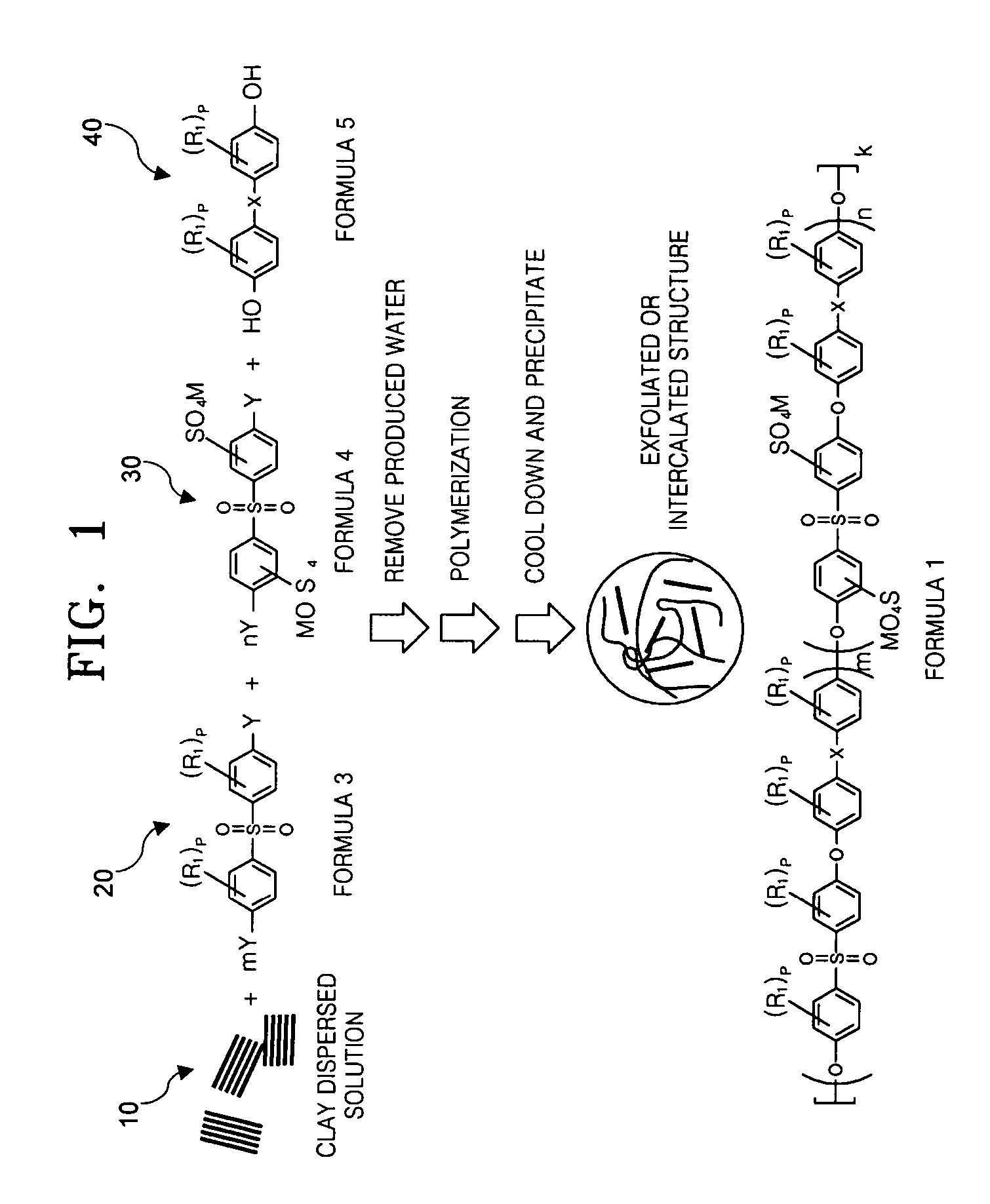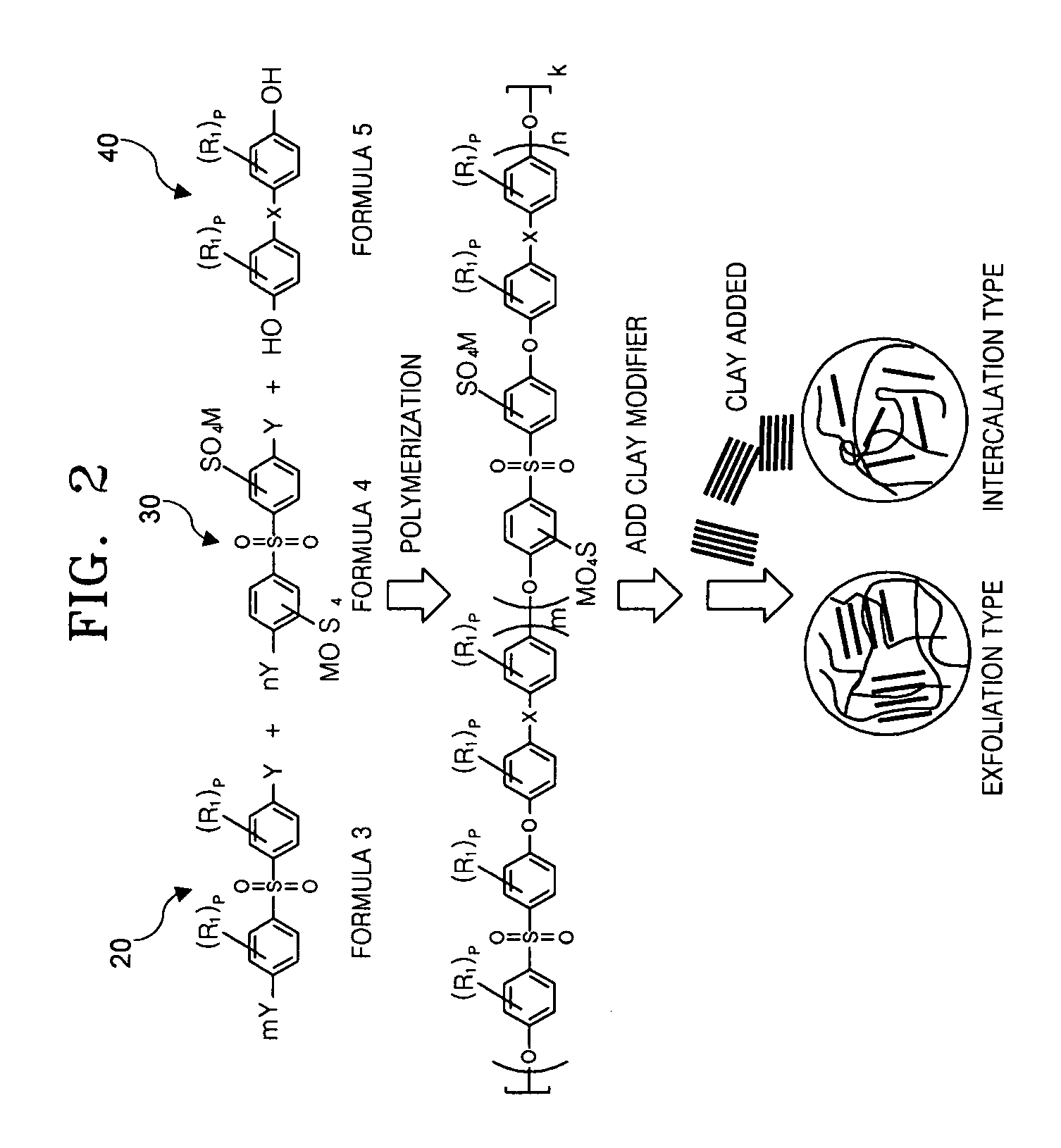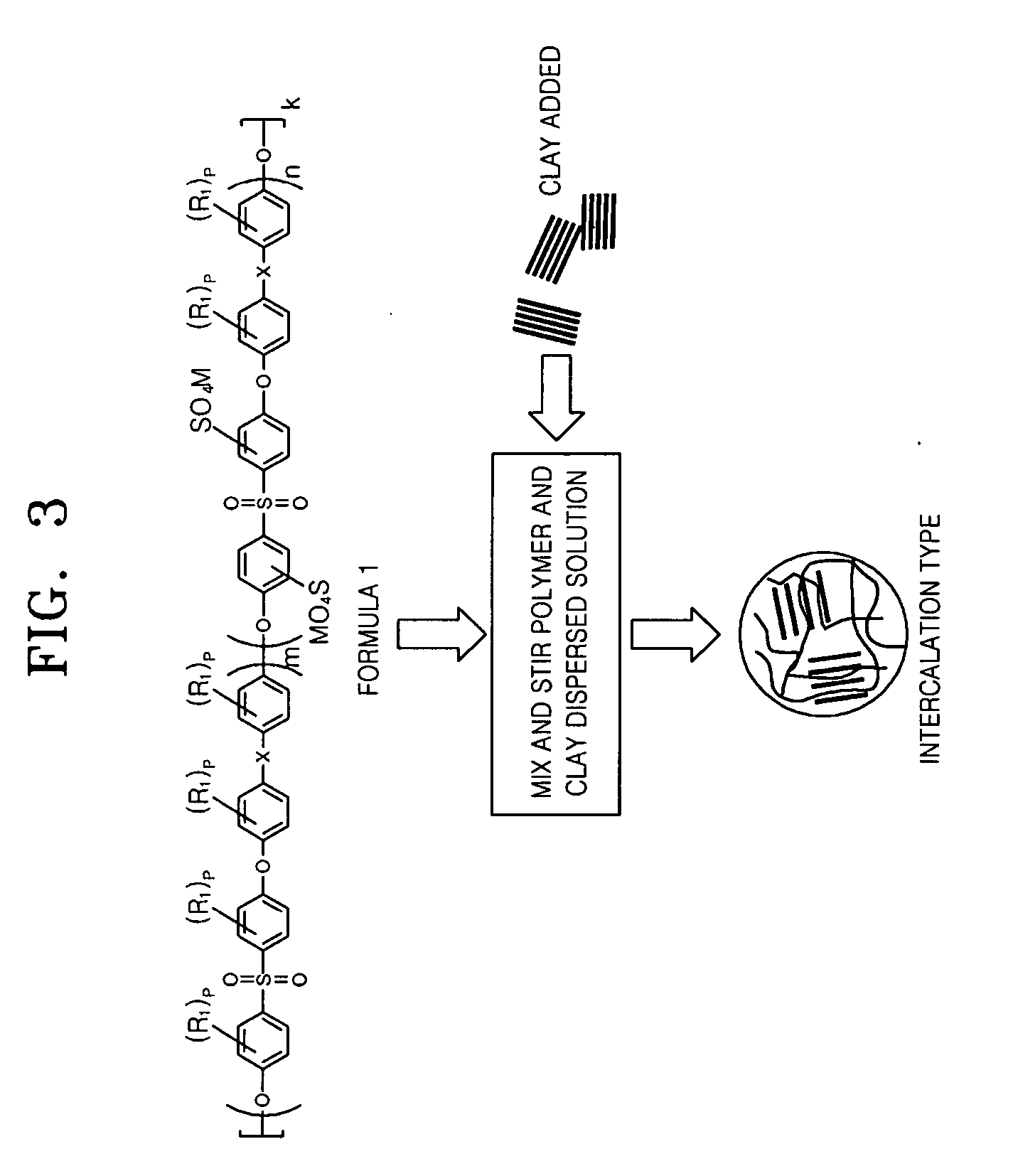Nanocomposite, nanocomposite electrolyte membrane and fuel cell using the same
- Summary
- Abstract
- Description
- Claims
- Application Information
AI Technical Summary
Benefits of technology
Problems solved by technology
Method used
Image
Examples
example 1-1
Manufacturing of Nanocomposite and Nanocomposite Electrolyte Membrane
[0089] 0.1 moles of S-DCDPS, 0.35 moles of DCDPS, 0.459 moles of HFIPDP, nonmodified clay such as montmorillonite (3 parts by weight: based on 100 parts by weight of the total weight of monomer) and 0.55 moles of potassium carbonate were mixed. Using 120 ml of N-methylpyrrolidone (NMP) and 100 ml of toluene as a solvent, the mixture was refluxed at 160° C. for 12 hours, and generated water was removed. When water was no longer found through a dean stock, the toluene was removed through a valve. Then the temperature of the reacted mixture was raised to 180° C. in 2 hours and a polymerization reaction was performed for 4 hours.
[0090] As polymerization progressed, the viscosity of the solution was raised. After completion of polymerization, the polymerized solution was cooled down to an ambient temperature (20° C.) and then poured into triple distilled water (1000 ml) to obtain precipitate. The resultant precipitate...
example 1-2
Manufacturing of Nanocomposite and Nanocomposite Electrolyte Membrane
[0093] A nanocomposite electrolyte membrane was formed as in Example 1-1, except that the amount of clay was 5 parts by weight based on 100 parts by weight of total monomer.
example 1-3
Manufacturing of Nanocomposite and Nanocomposite Electrolyte Membrane
[0094] A nanocomposite electrolyte membrane was formed as in Example 1-1, except that the amounts of DCDPS, HFIPDP, and potassium carbonate were 0.407 moles, 0.56 moles, and 0.672 moles, respectively. Furthermore, 0.00357 moles of 4-aminophenol (AP), a clay modifier, was added.
PUM
| Property | Measurement | Unit |
|---|---|---|
| Temperature | aaaaa | aaaaa |
| Temperature | aaaaa | aaaaa |
| Temperature | aaaaa | aaaaa |
Abstract
Description
Claims
Application Information
 Login to View More
Login to View More - Generate Ideas
- Intellectual Property
- Life Sciences
- Materials
- Tech Scout
- Unparalleled Data Quality
- Higher Quality Content
- 60% Fewer Hallucinations
Browse by: Latest US Patents, China's latest patents, Technical Efficacy Thesaurus, Application Domain, Technology Topic, Popular Technical Reports.
© 2025 PatSnap. All rights reserved.Legal|Privacy policy|Modern Slavery Act Transparency Statement|Sitemap|About US| Contact US: help@patsnap.com



